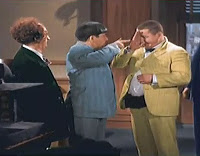Today we wrapped up the third and (for the moment, at least) final session of playing the DnD Next playtest edition. My thoughts from our first session are here.
Some cool things:
Cantrips. Having the cantrips be at-will seems to be a pretty good idea. Most people focused on the cantrips magic missile or ray of frost, claiming they were too over powered to be at-will spells. I disagree. The damage inflicted by magic missile won’t kill most things because of the general hit point inflation of the game. That works in favor of the lower-powered cantrips. I also don’t see ray of frost, as written, as being overly powerful; the spell description only says that the target is reduced to a speed of 0, not that it has any actual impact on a creature in melee (it doesn’t even put a target at a disadvantage).
I found that the cantrips also still encourage inventive uses, just like they did in 1E. For example, I used ray of frost to encase a warning gong in ice, muting its sound. I also used mage hand to great effect, opening doors and the like with little concern for any traps, and (one of my favorites, which I did today), using the mage hand to poke an enemy in the eyes with ten pounds of force. Our DM adjudicated that the target would be at a disadvantage the next round. Nyuck, nyuck, nyuck!
Advantage/Disadvantage. It’s an elegant mechanic and dutifully replaces a ton of what could otherwise be fiddly bonuses and penalties. If you’re deemed to have an advantage, you roll 2d20 and take the higher. If you’re at a disadvantage, you roll 2d20 and take the lower. That’s something that I could see porting into my current Adventures Dark and Deep game, or Labyrinth Lord, S&W, etc.
Backgrounds and Themes. This is probably going to put me more at odds with my fellow OSRians than the others. I like the idea that setting-related backgrounds can have a fairly minor mechanical effect. If there is some way to add them after the character creation process (which we apparently will see in the next iteration of the playtest rules), I would strenuously want to see it tied to in-campaign activities, rather than just something that could be picked up whenever you gain a new level.
Some not-so-cool things:
Healing. I think the healing still needs a lot of work. But, judging from the majority of comments over at the WotC message boards, I actually think the opposite of what most of the playtesters do. I think there’s too much and too easily-accessible healing. I really like the idea of the “short rest” (which basically lets you recover 1 “hit die” worth of hit points per level, rolled randomly), but I think that once one is put into negative hit points, which are supposed to represent actual serious physical wounds rather than fatigue and scrapes, the consequences should be much more grave. As it stands, you could be reduced to -9 hit points, which is supposed to indicate serious trauma, and be fine and dandy after a good night’s sleep (the “long rest”).
Initiative. I don’t like the fact that initiative is rolled once for the combat, and whatever you roll– awesome or awful, remains your roll for the whole melee. It just doesn’t make a lick of sense to me that combat remains some sort of well-choreographed ballet where everyone always acts in the same order every round. I prefer individual initiative rolled each round.
Combat rounds. Six seconds per round is too fast. It didn’t work when folks tried to house rule it that way in 1E back in the 1980’s, and it doesn’t work now. Maybe make them 30 or 15 seconds long?
Weird prices. The price list for equipment has some really odd things in it. Healing kits are pretty much required equipment, as they are essential for the short rest to work. But they cost 50 g.p. each. For what? A few bandages and a bottle of non-magical salve? That’s oddly high and smacks of being priced in order to achieve some sort of in-game balance, rather than making sense from a verisimilitude point of view. Also, consider this:
- Acid does 1d4 h.p., costs 10 g.p.
- Alchemist’s fire does 1d4 h.p. until the target uses its action to put out the fire, costs 20 g.p.
- Oil does an extra 5 h.p. if the target takes fire damage (as a torch used as a club on a creature that has been doused in oil), costs 1 s.p.
Is it me, or does oil seem to be incredibly under-priced for the damage it inflicts? Sure, it requires an extra action to “activate” (i.e., whacking the target with a torch after it’s been hit with oil), but it does more damage than acid or one round of alchemist’s fire and you can but 100 flasks of oil for the cost of a single vial of acid.
Overall
On the whole, I really had fun playing the first playtest rules. If the final game stays with the basic philosophy that they’ve been espousing– a very simple set of core rules that are supplemented with a host of optional add-on rules– I could very easily see myself playing or running a game. Such a stripped-down core rulebook wouldn’t have to be much larger than Labyrinth Lord or Swords & Wizardry, and the DM (and possibly players, depending) would have the chance to turn up the complexity dial as they saw fit.
That would definitely be the way to go, from my perspective.











I agree with nearly all of your points. I still don't see though how different players within the same campaign could choose to be plain and fiddly. Talk about imbalance, but I'm surprisingly enjoying the playtest.
It also just occurred to me that, if using a torch to smack someone who's been doused in oil, the torch should be treated "as a club that deals fire or bludgeoning damage". So the torch itself does 1d6 h.p., in addition to the 5 h.p. for the oil.
Way overpowered for the cost.
Heh; it takes all sorts! For what it is worth, I disagree with a good chunk of those points, but probably for the very same reasons [i.e. our preferences lie in different directions on those counts].